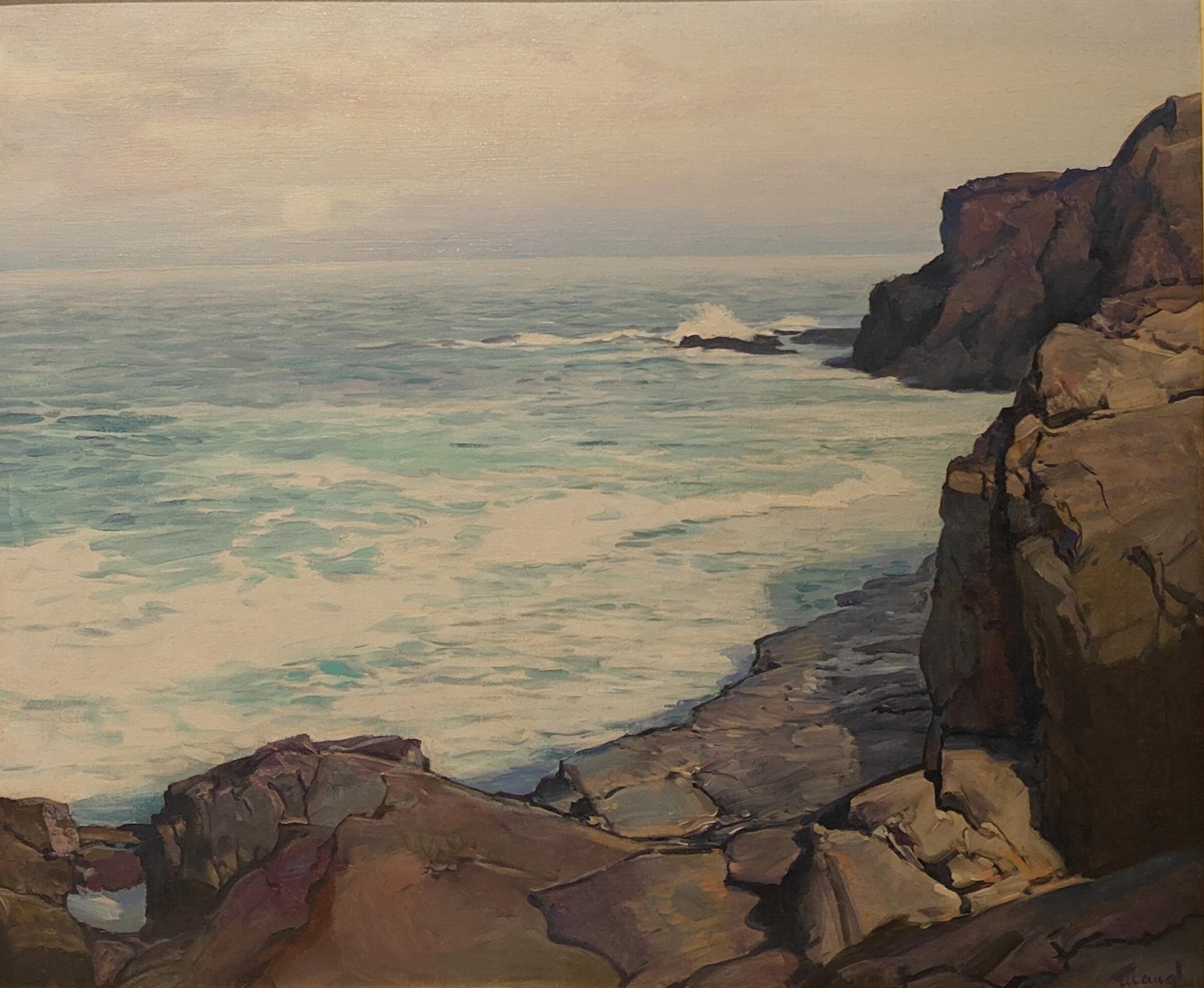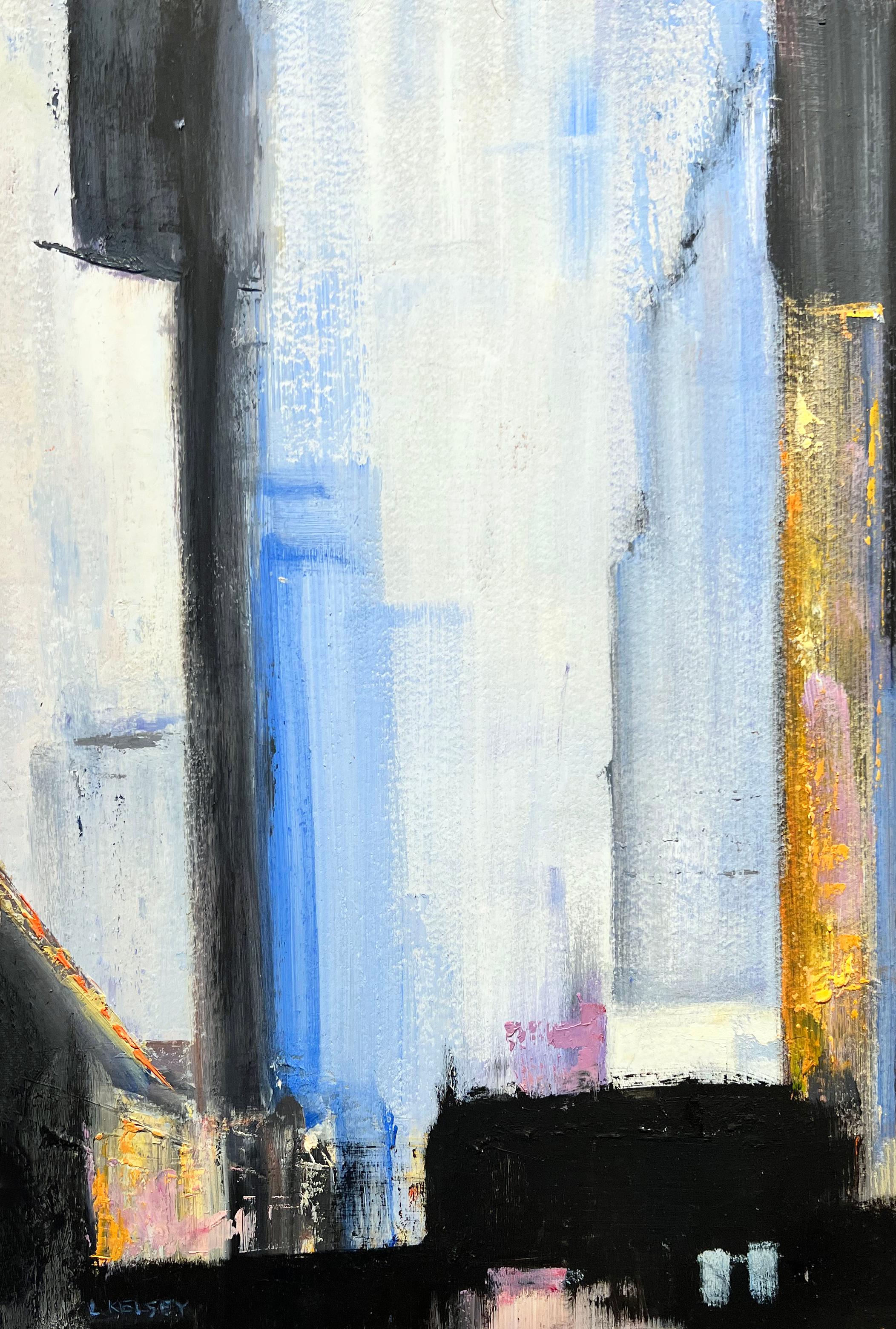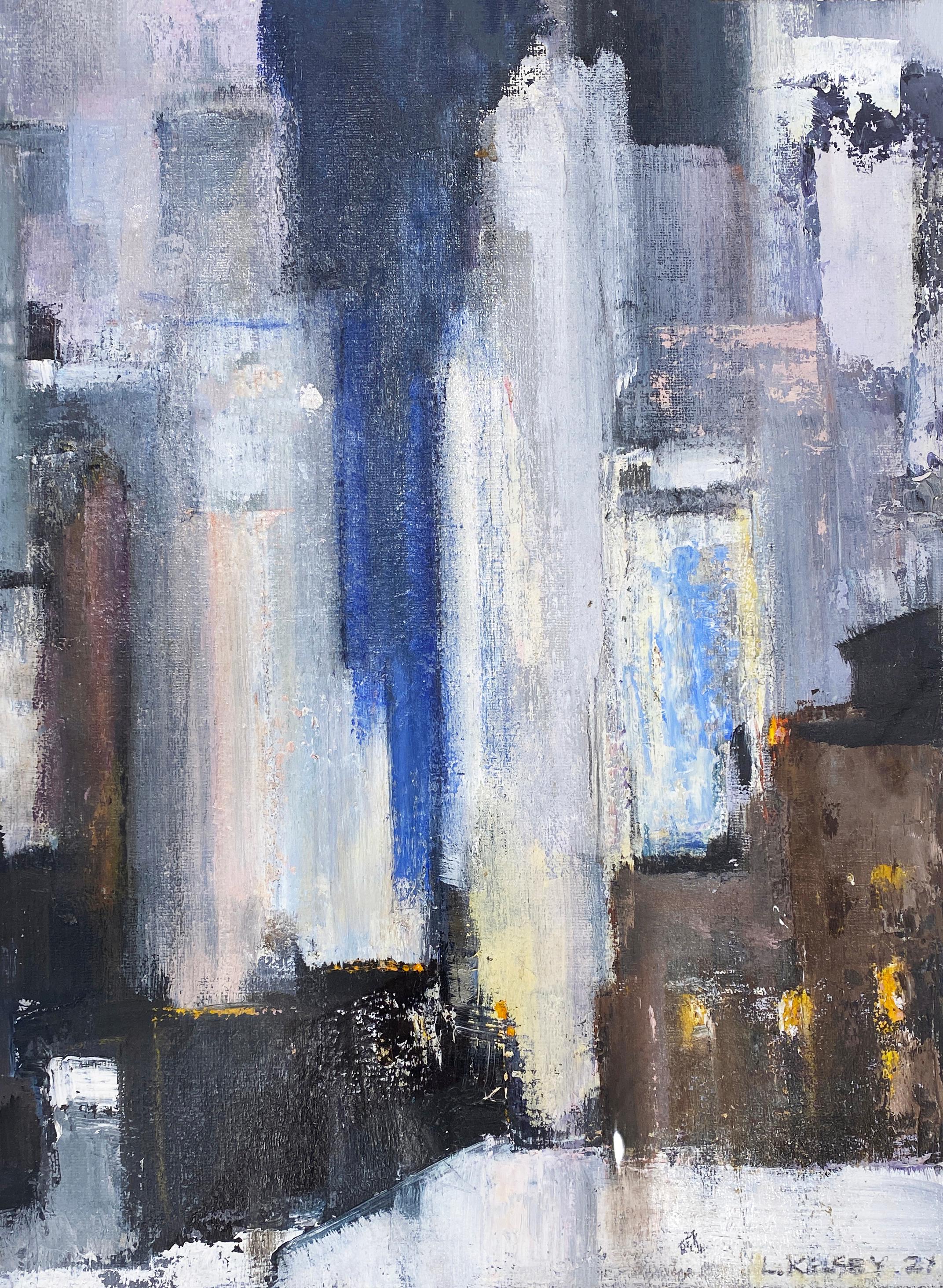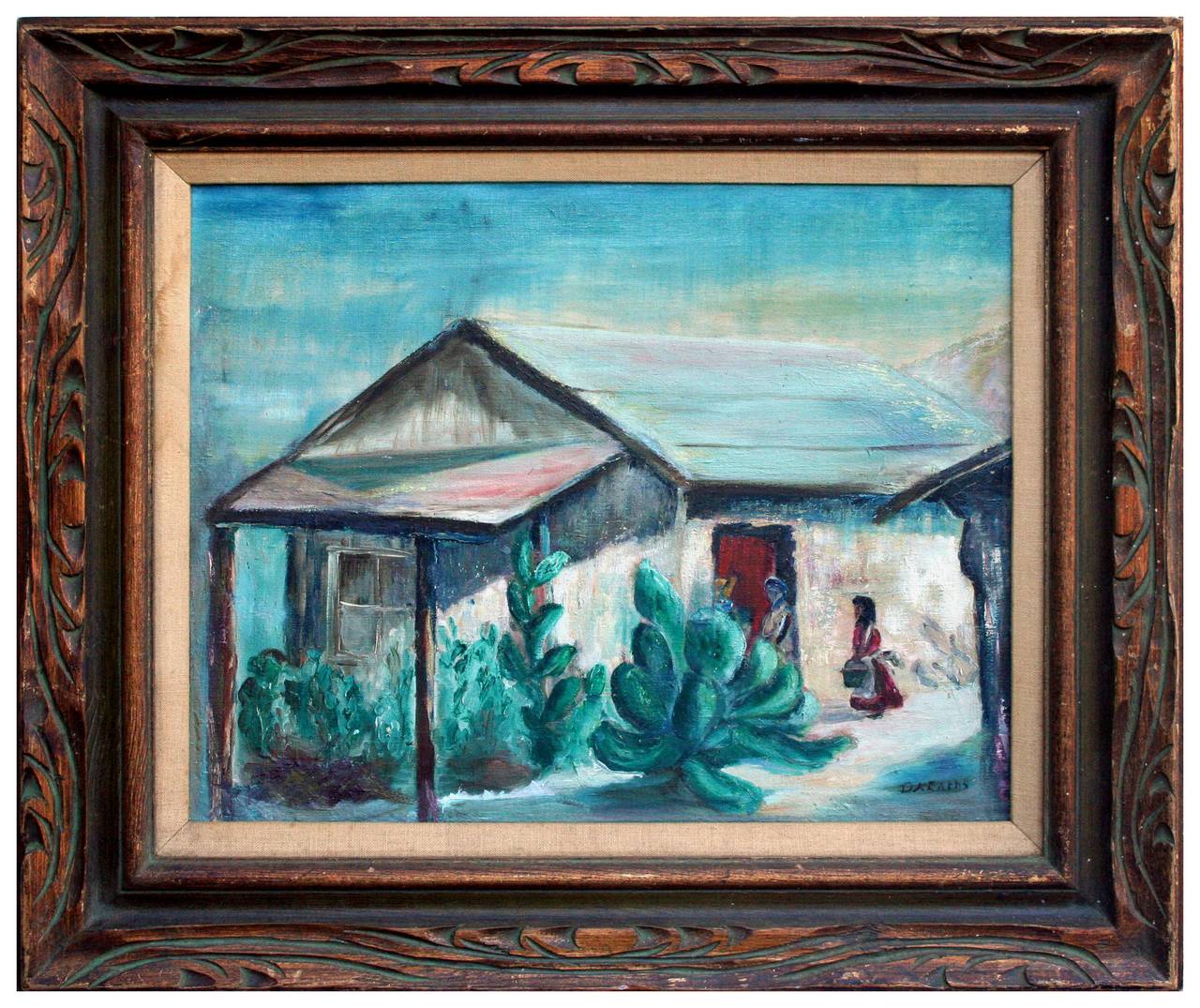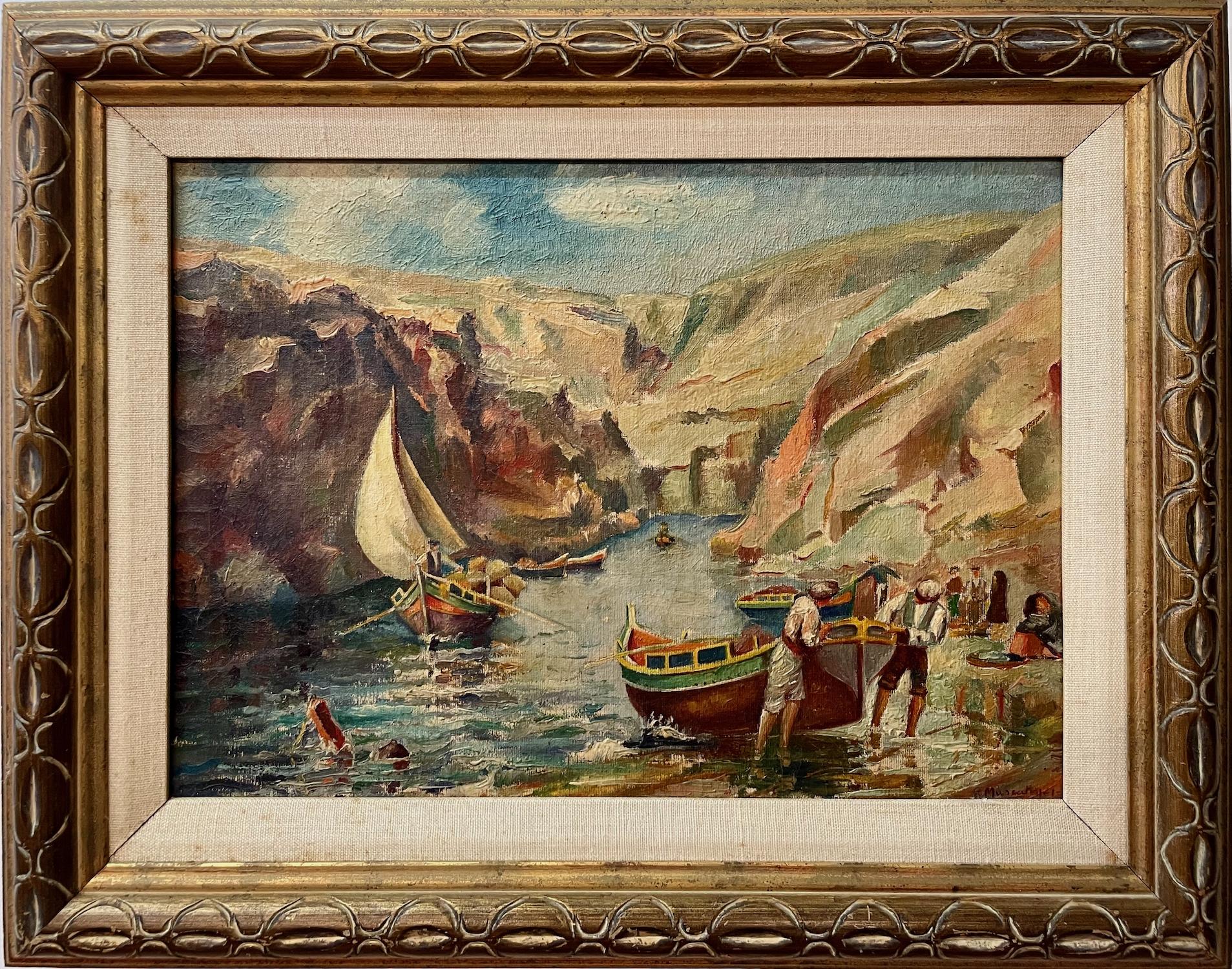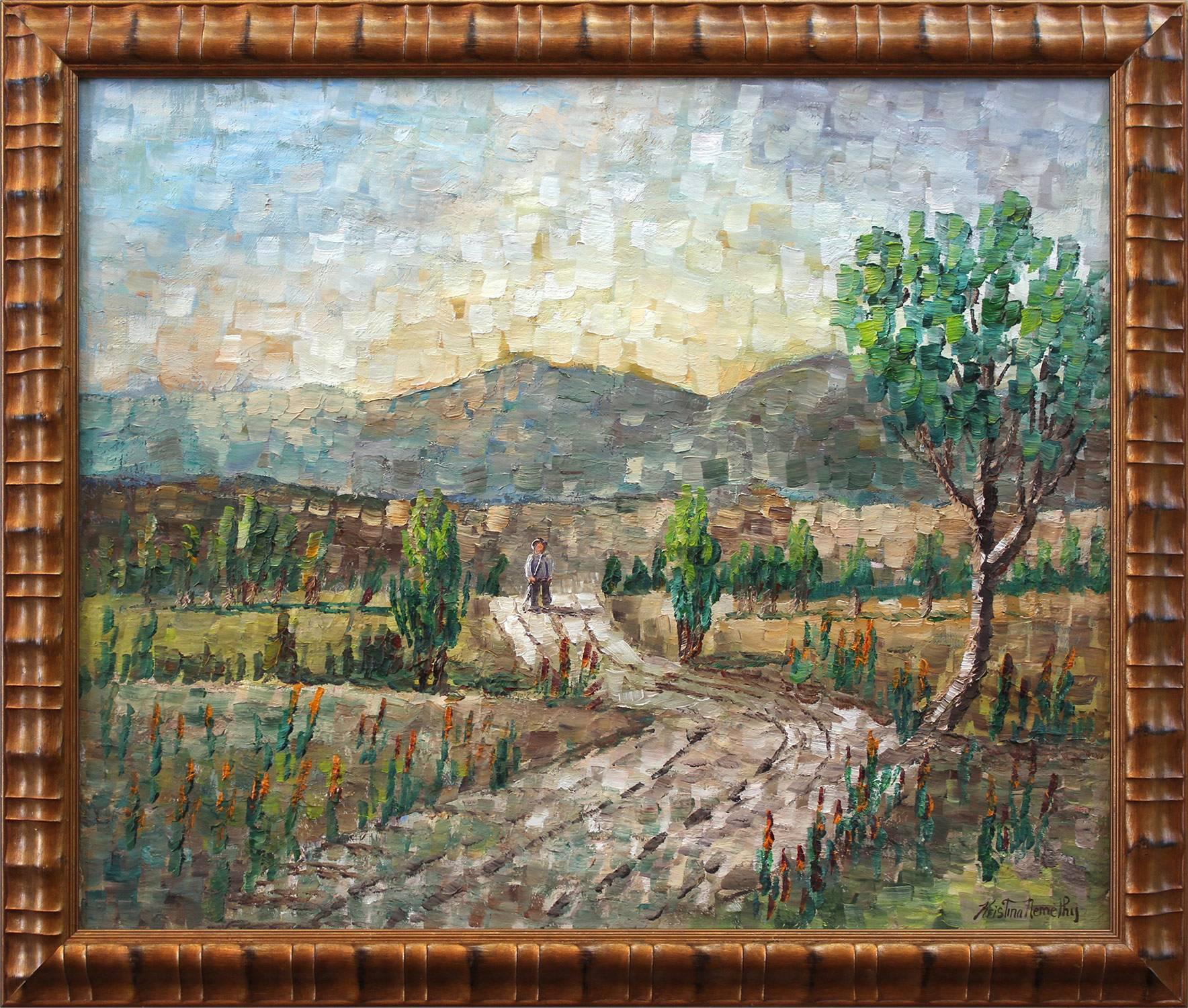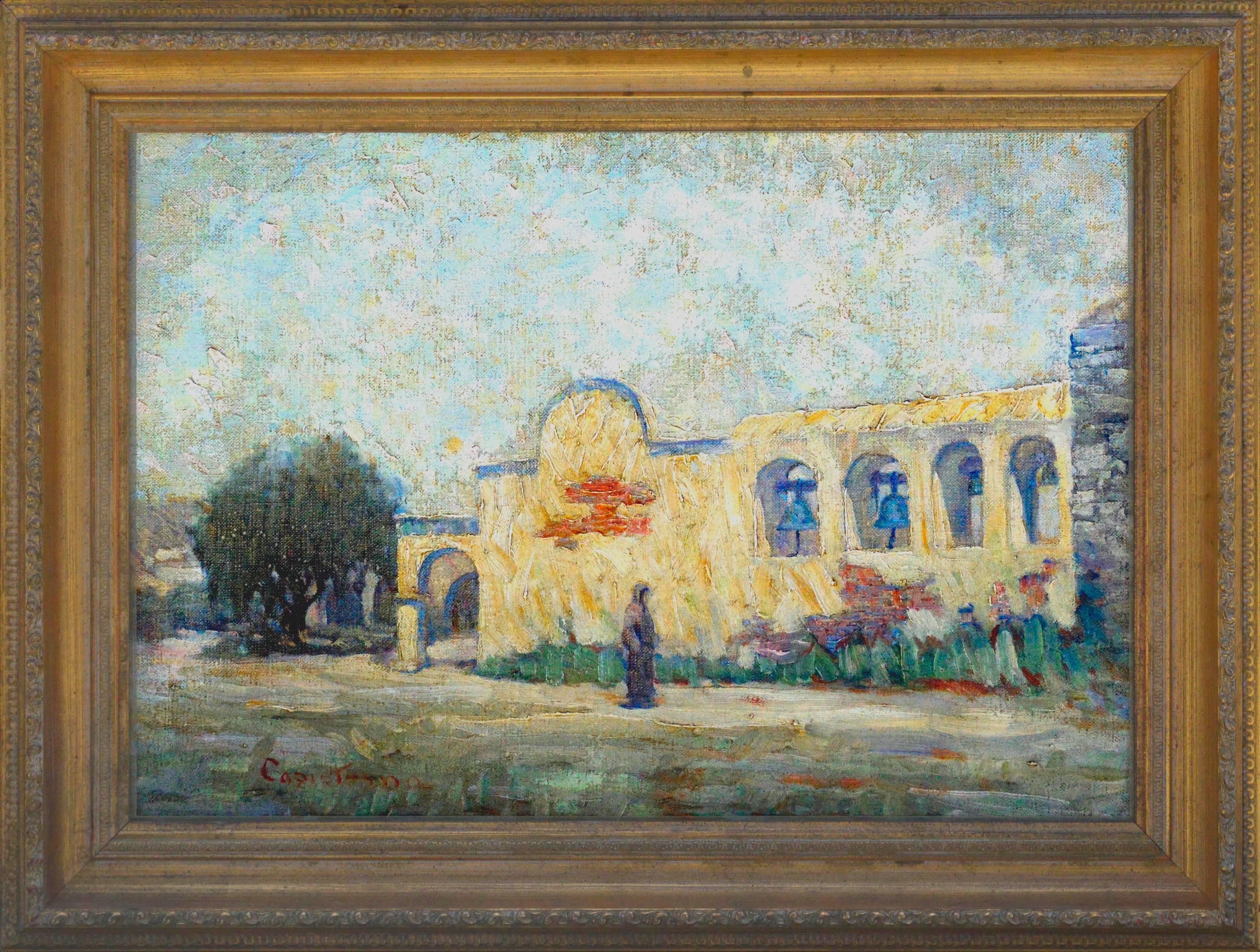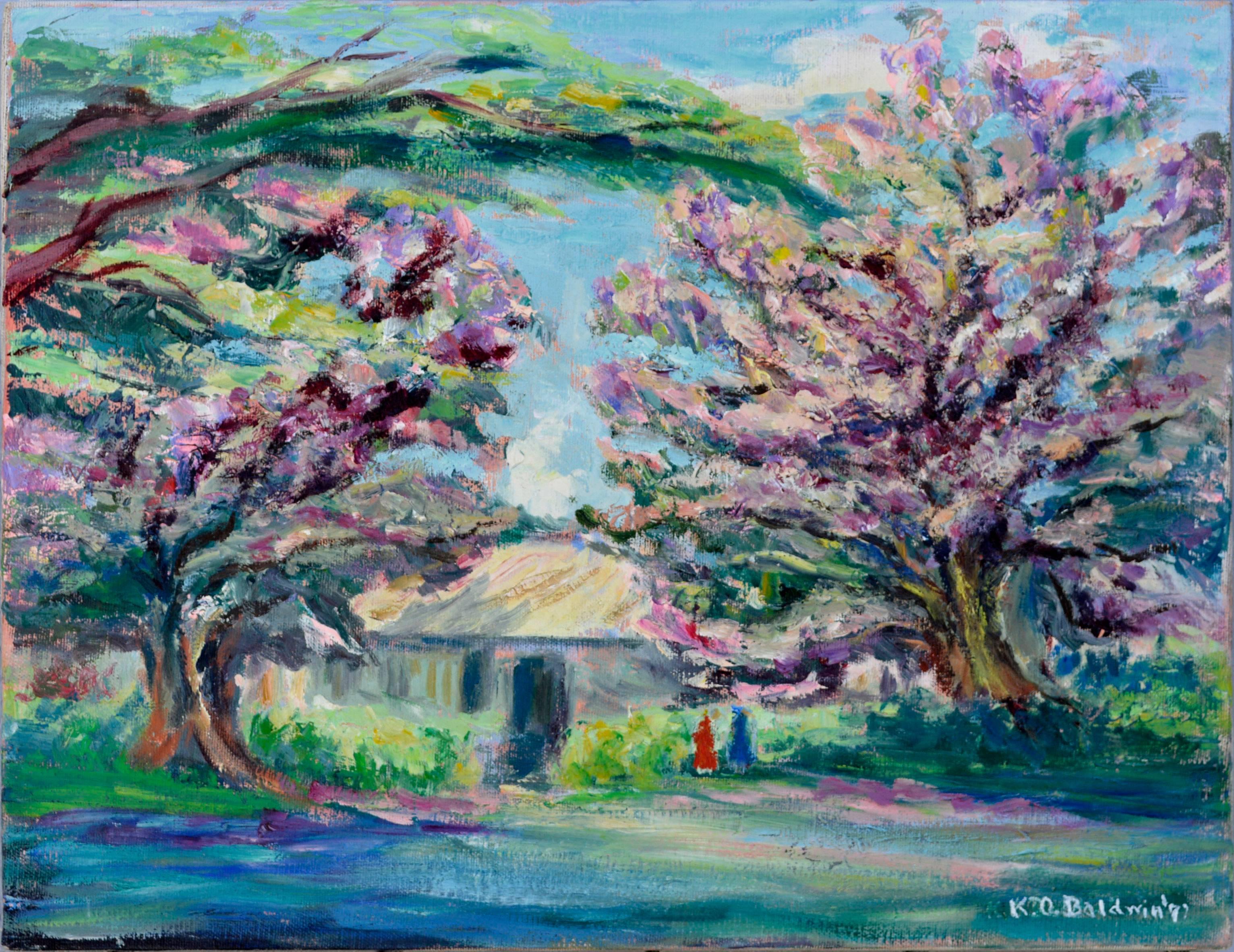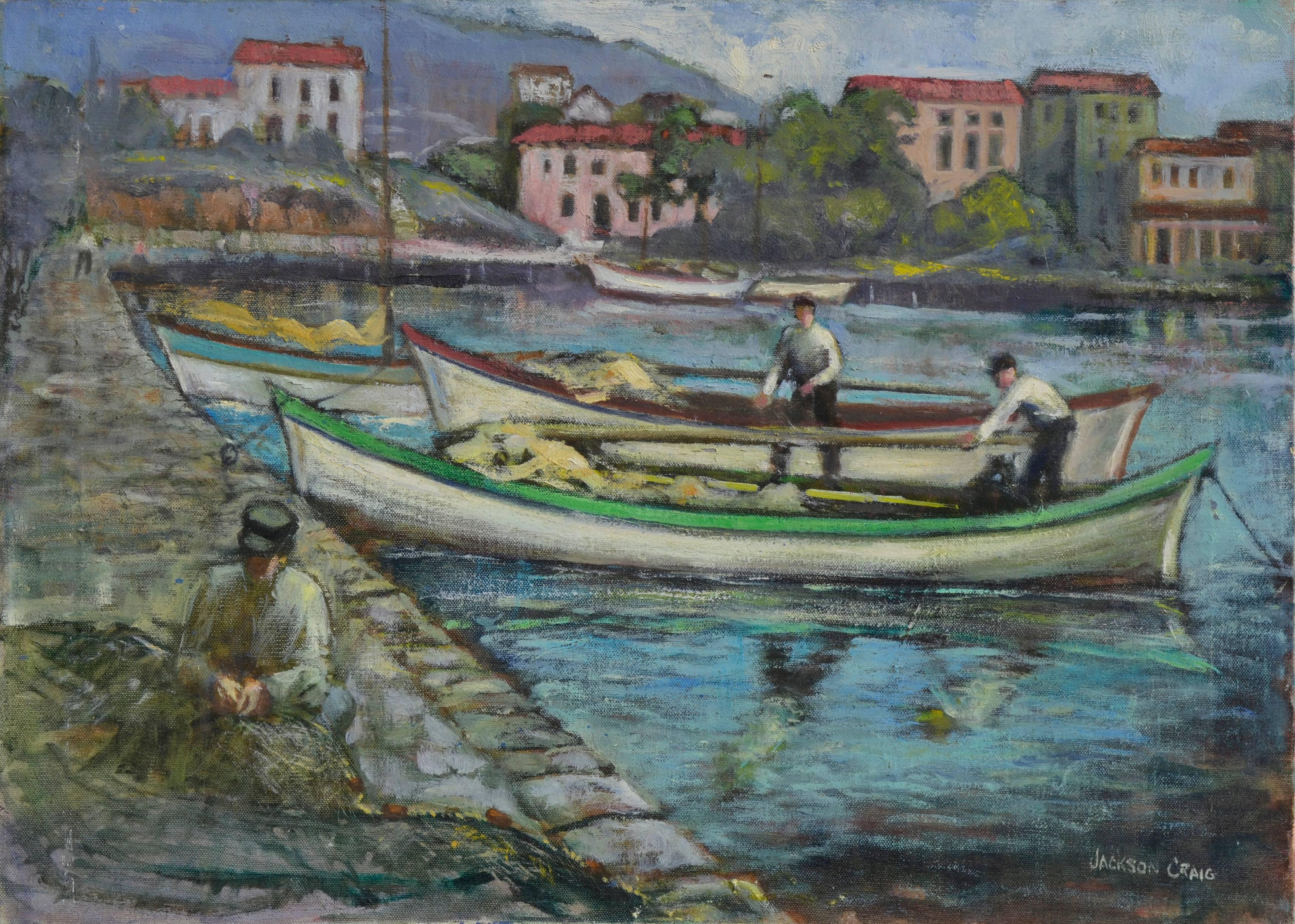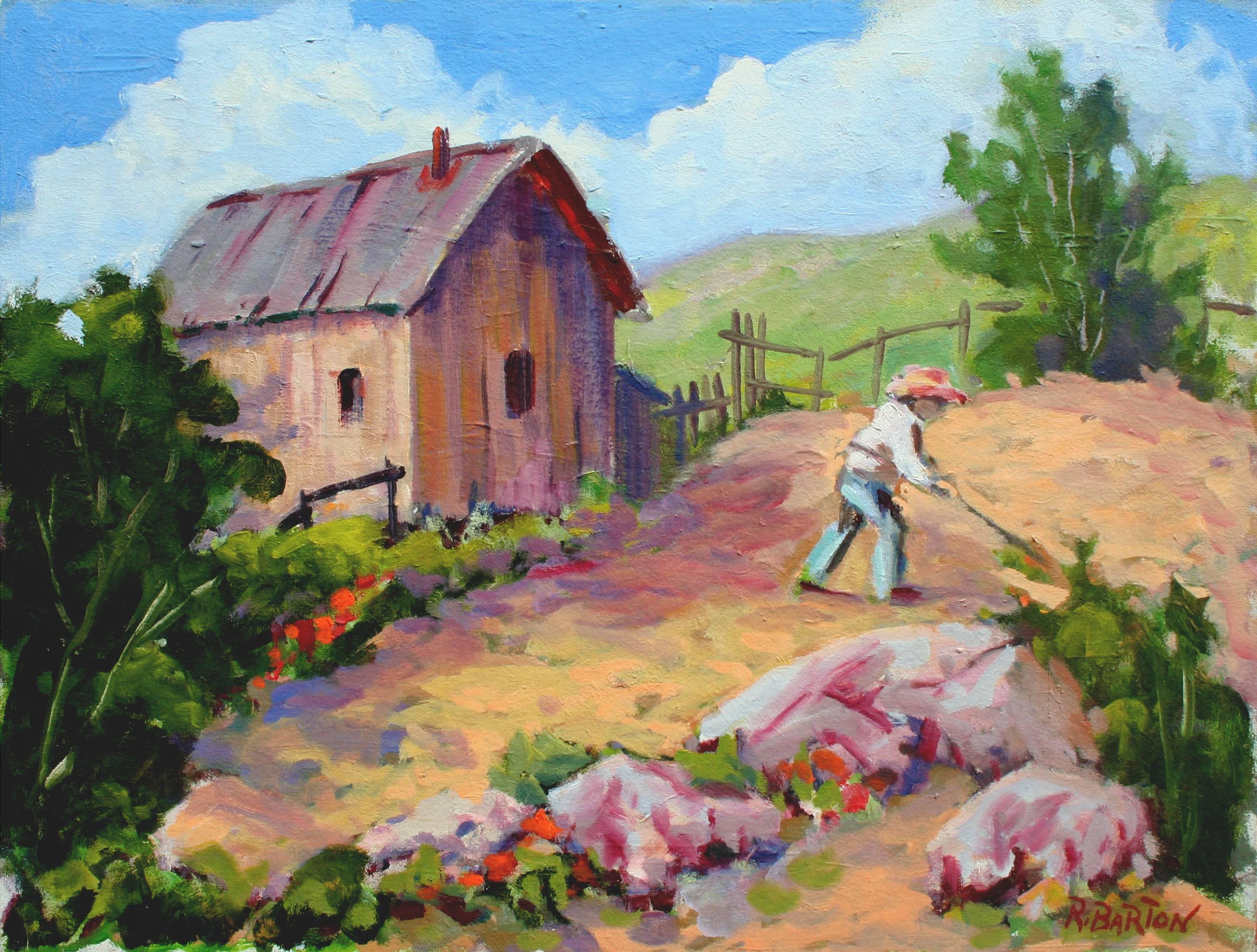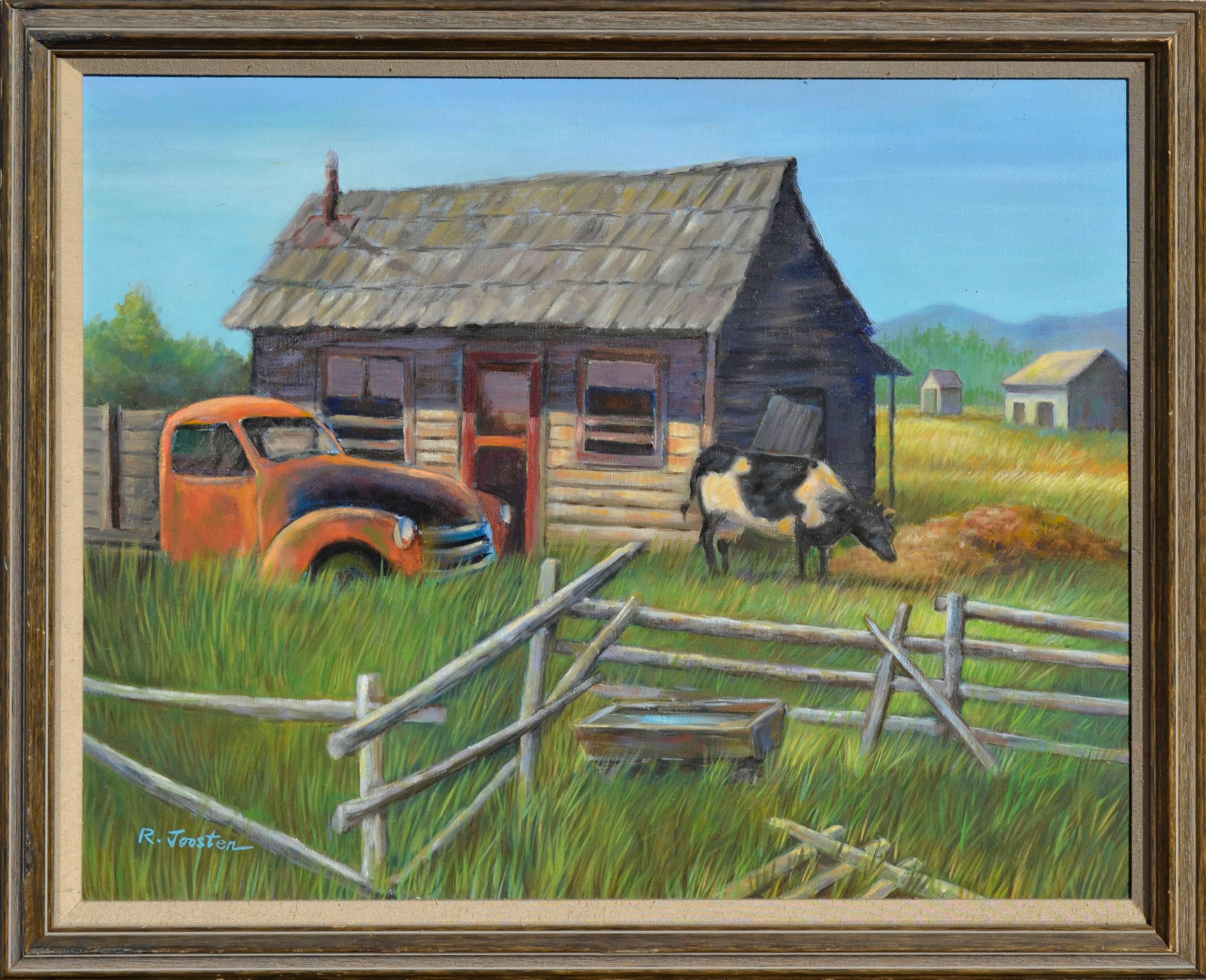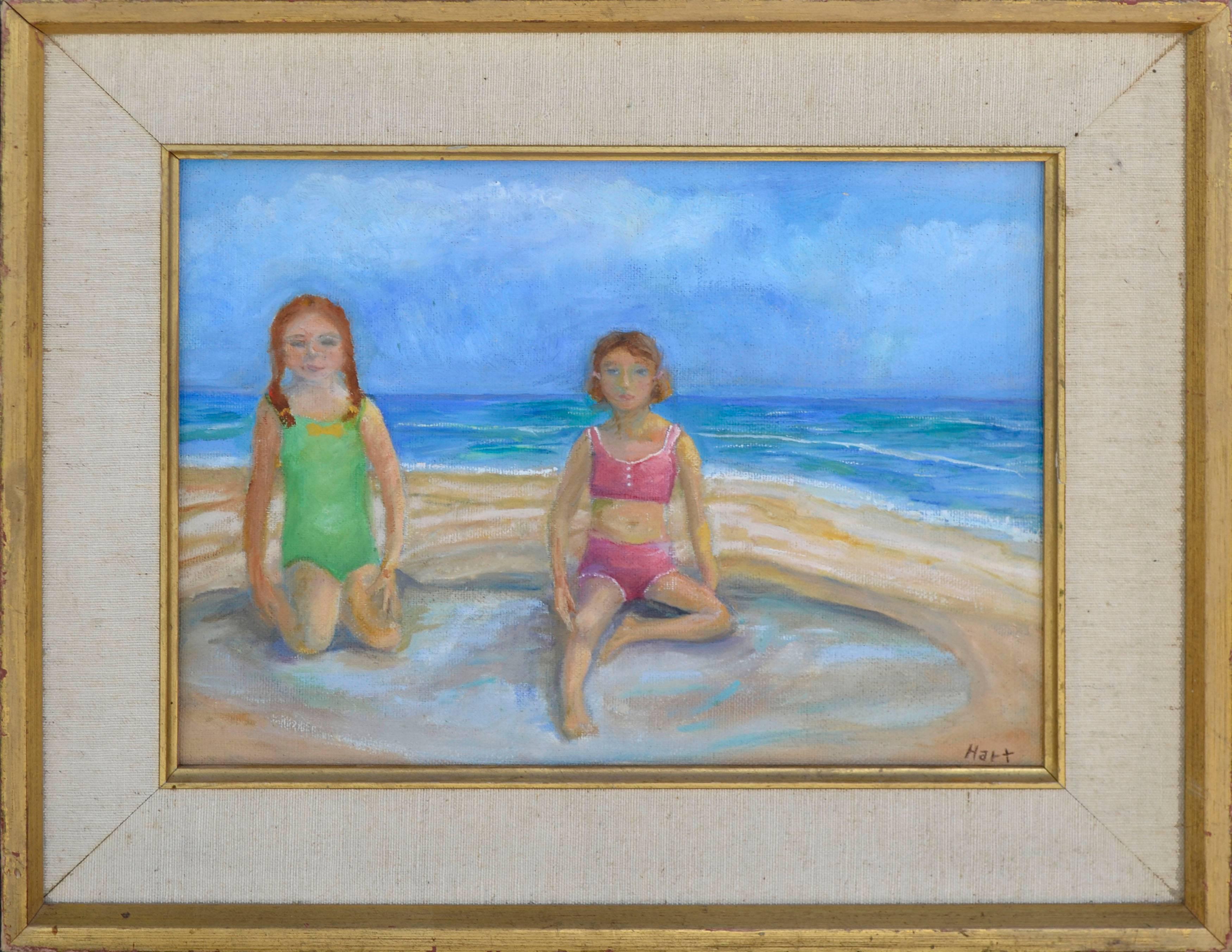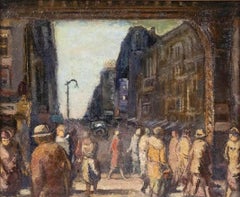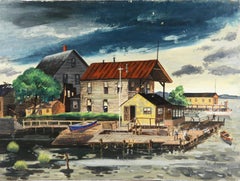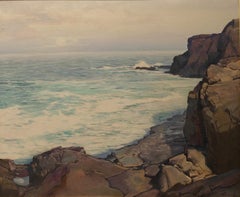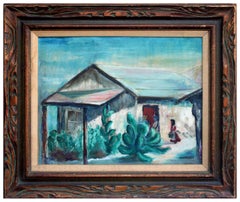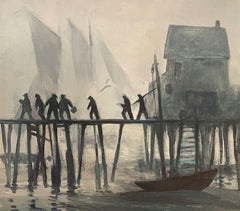
"Thick Outside, " Tod Lindemuth, Provincetown Fishermen at Docks with Boat, WPA
View Similar Items
Tod Lindenmuth"Thick Outside, " Tod Lindemuth, Provincetown Fishermen at Docks with Boat, WPA1938
1938
About the Item
- Creator:Tod Lindenmuth (1885 - 1976)
- Creation Year:1938
- Dimensions:Height: 24 in (60.96 cm)Width: 28 in (71.12 cm)
- Medium:
- Movement & Style:
- Period:
- Condition:Excellent.
- Gallery Location:New York, NY
- Reference Number:1stDibs: LU115628396242
Tod Lindenmuth
Tod Lindenmuth was a semi-abstract painter and graphic artist who did much to promote modernist styles. Although he was much influenced by Abstract Expressionism, his subject matter was realistic enough to be recognizable. He did linoleum cuts and was one of the first to work with that medium, and towards the end of his life, he experimented with collage. In the 1930s, he had commissions for the Public Works of Art Project and the Works Progress Administration. Lindenmuth was born in Allentown, Pennsylvania. He studied with Robert Henri at the New York School of the Arts in Manhattan, and in Provincetown with E. Ambrose Webster and George Elmer Browne. He first exhibited in Provincetown in 1915 and between 1917 and 1928 served on the jury for the Provincetown Art Association’s "First Modernistic Exhibition.” He exhibited regularly with the Society of Independent Artists in New York. He married artist and illustrator Elizabeth Boardman Warren, whom he met in Provincetown, and with whom he had two children. They were both very active in Provincetown, but in 1934, they visited St. Augustine, Florida, for the first time and went on to establish a winter studio in the Fatio House on Aviles Street and became active and respected members of the arts community there. In 1940, the couple moved permanently to St. Augustine. They never owned a car and sought subjects on long walks around St. Augustine. In 1940, Lindenmuth turned away from graphic arts and focused on landscape painting. One of his landscapes, Spanish Cedar and Live Oak along the Moat, St. Augustine, depicted a huge tree on a historic site whose excavations showed that St. Augustine had an early role in validating Spanish claims to North America. In 1940, the Lindenmuth's moved their summer studio from Provincetown to Rockport, Massachusetts, and became regular exhibitors of the Rockport Artist Association. He once said, “the marine subjects of Provincetown and Rockport, Massachusetts, are favorite painting spots but the landscape of the South with its subtle and tropical aspects furnishes a lot of material for the artist, particularly around St. Augustine.” For the remainder of their painting careers, they divided their time seasonally between Rockport and St. Augustine. In 1968, they retired to Jacksonville, Florida, living in Wesley Manor (Westminster Woods) on Julington Creek. Lindenmuth died in Jacksonville in 1976 at age 91.
More From This Seller
View All1920s American Realist Figurative Paintings
Canvas, Oil
1960s American Modern Landscape Paintings
Canvas, Oil
1940s American Modern Landscape Paintings
Canvas, Oil
1930s American Realist Figurative Paintings
Canvas, Oil
1930s American Realist Figurative Paintings
Canvas, Oil
1910s Figurative Paintings
Canvas, Oil
You May Also Like
1920s American Impressionist Figurative Paintings
Oil, Canvas
21st Century and Contemporary American Impressionist Landscape Paintings
Canvas, Oil
21st Century and Contemporary American Impressionist Landscape Paintings
Canvas, Oil
1930s American Impressionist Landscape Paintings
Canvas, Oil
1950s American Impressionist Landscape Paintings
Canvas, Oil
Early 2000s American Impressionist Landscape Paintings
Canvas, Oil
Recently Viewed
View AllRead More
Ludwig Bemelmans Captures the Thrilling Sight of Coney Island at Night
The ‘Madeline’ creator and Carlyle Hotel legend was in a New York state of mind in the 1940s when he produced this exuberant and rare oil painting.
Mid-Century Americans Didn’t Know Antonio Petruccelli’s Name, but They Sure Knew His Art
The New York artist created covers for the nation’s most illustrious magazines. Now, the originals are on display as fine art.
